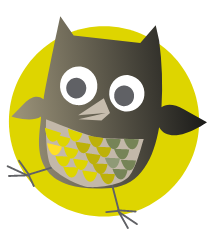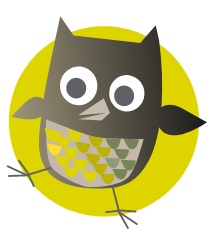Diversifying the children’s book industry and what our children are reading is a much talked about topic, with its importance rightly spoken about in the news, in schools, and at home. Many people want to make a difference, but with so much information available, it can be difficult to know where to start. I’ve put together some small and affordable suggestions we can all put into practice, that will hopefully help to simplify the process.
During my childhood I did not have access to books that represented me. I was an avid reader and remember vividly that I would constantly be reading, especially from ages 8–14. The Sweet Valley High series and Point Horror were particular favourites. But those books never described me. I didn’t see myself on the cover, or imagine that the characters within the book were me. Not until I was gifted The Friends by Rosa Guy – this was the first time I had ever read, or owned, a book that featured Black girls on the cover, or as main characters, and so this first representative book became a core memory and I still remember how I felt and how special it was to me. Now, as a parent I try to ensure my children have access to books that authentically represent them, where they can be the hero or protagonist in a range of genres.
However, it can be a challenge for us as parents to find books that truly reflect the diversity of families in the UK. According to CLPE research, of the 6478 children’s books published in 2019, 680 featured ethnic minority characters. Over the past 11 years, less than 2% of all creators of children’s books published in the UK were British people of colour.
Representation, or lack thereof, is felt by children and young people on a personal level. To see themselves reflected in literature not only feels validating, but can also paint a picture of who they can become, as well as providing them with role models and inspiration. Books can tell, and illustrate, human diversity, and are a wonderful tool to connect us and provide insights into different cultures, beliefs and lives, so it’s important that the representation within books is authentic, spanning a range of genres and is free from damaging stereotypes. This is why Penguin and the Runnymede Trust’s recent Lit in Colour research is so important, as it has shown us that not only are children and young people from Black, Asian and minority ethnic backgrounds not seeing themselves represented within the literature they read, but children and young people of all backgrounds are also not reading books – or being given access to books – by Black, Asian or minority ethnic authors.
Reading can be an exploration of the human experience, and studies have shown that it helps children build vital developmental skills, including emotional intelligence and empathy, so that they can better put themselves in someone else’s shoes. It’s also been linked to improving emotional regulation, which leads to improved mental health. Children and young readers having access to and reading a diverse range of books by creators from a range of different backgrounds, enables them to connect with other perspectives and human experiences, fostering their emotional growth and allowing them the opportunity to connect with other world views.
Here are some practical things we can all do at home now to make a difference:
- Think about the diversity you see in your family, friends, colleagues and day-to-day life and try to add books to your collection that reflect these differences. As a British Afro-Caribbean family we actively seek out books that authentically represent our own family, but it’s just as important to identify the families and cultures that aren’t represented in the books we own so that our children can also see diversity in their books.
- Seek out and support books by authors and illustrators of colour who share lived experiences with the characters in their books. It’s important that children have authentic and accurate representation within the books they read and love, which will affect how they see themselves and others, and encourage their aspirations to become authors and illustrators. Luckily there are some excellent resources available to help us easily find books by creators of colour:
- The Colourful Bookshelf – bringing together the books created by British creators of colour in one place.
- Afrori Books – an online bookshop that specialises in books by Black authors.
- Requesting books from your local library is a brilliant way to support authors of colour (book creators can receive Public Library Remuneration (PLR) payments for borrowed titles), whilst simultaneously making those books available for other members of the community and showing that there’s a demand for them. Win win!
- Support independent bookstores and independent publishers. There are so many wonderfully inclusive publishers and bookshops pushing for change within the industry. Here are a few to take a look at:
Here are some of my children and I’s favourite books by British creators of colour that you might also enjoy:

My Dad is a Grizzly Bear
Written by Swapna Haddow and Illustrated by Dapo Adeola | Age 2+
The hilarious story of a little boy with a wild imagination and all the fun that he gets up to, with his family. Centres on a black-mixed family, has gorgeous illustrations and perfect to read aloud.

The Rapping Princess
Written by Hannah Lee and illustrated by Allen Fatimaharan | Age 2+
Full of fun, rhymes and energy, this original book focusses on a princess with singing talents that differ from everyone else she knows and celebrates being yourself.

Aziza’s Secret Fairy Door
Written by Lola Morayo and illustrated by Cory Reid | Age 6-8
The first book in an inclusive magical adventure series filled with mischief and friendship, this is such an endearing book, full of hijinks. Magic is effortlessly woven into the everyday situations that children experience and it’s a joy to read.

Mr Shaha’s Marvellous Machines
Written by Alom Shaha and illustrated by Emily Robertson | Age 5-12
This wonderfully written non-fiction book by a science teacher and dad, gives clear, step-by-step instructions for over 15 fun activities to engage young people. Perfect for even those of us who find crafts at home difficult!

Children of the Benin Kingdom
Written by Dinah Orji | Age 8+
A beautiful, immersive trip to historic Benin Kingdom, with a Black heroine, adventure and mystery galore.

Rumaysa
Written by Radiya Hafiza and illustrated by Rhaida El Touny and Areeba Siddique | Age 8+
Such a fresh retelling! A brilliant spin on a classic fairytale, which effortlessly blends cultures and has strong female protagonists.

Me, My Dad and the End of the Rainbow
Written by Benjamin Dean and Illustrated by Sandhya Prabhat | Age 8+
A heartwarming tale of friendship, love, family and valuable lessons. Archie is such a beautifully-written character, who is kind, and full of love and acceptance.

Amber Undercover
Written by Em Norry | Age 10+
A thrilling teen spy adventure, which my daughter adored! Manages to incorporate changing family dynamics, teenage friendship drama and also be extremely funny.

Eight Pieces of Silva
Written by Patrice Lawrence | Age 12+
A beautifully written, sensitive exploration of grief with modern, realistic characters that teenagers will relate to. This is a page-turning mystery that will keep YA readers hooked until the conclusion.

